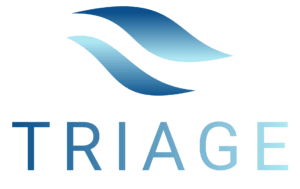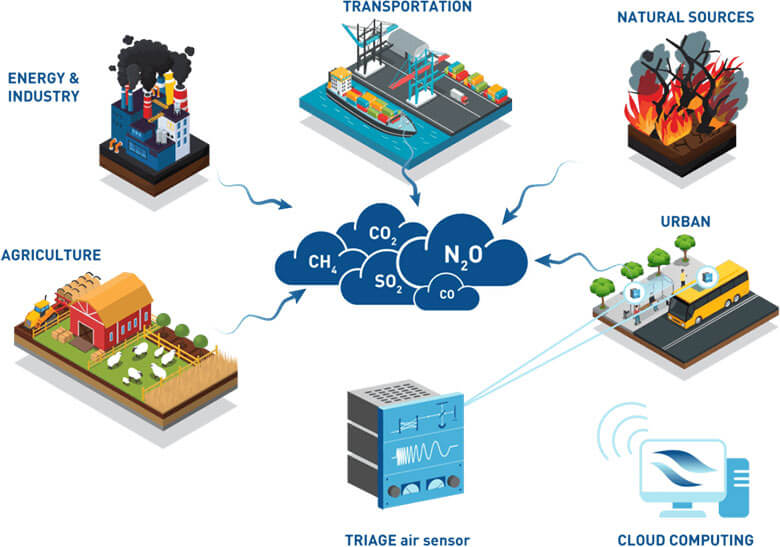Horizon 2020
6 June 2022

Ultra-broadband infrared gas sensor (TRIAGE)
- GA:
- Duration:
- Overall budget:
- EU contribution:
- Project consortium:
- 101015825
- 1/01/2021-31/08/2024
- EUR 5,853,623.50
- EUR 4,994,300.96
- Danmarks Tekniske Universitet (Denmark), Vivid Components Ltd. (United Kingdom), NKT Photonics A/S (Denmark), Stichting Katholieke Universiteit (Netherlands), Senseair AB (Sweden), CSEM Centre Suisse D’Electronique et de Micotechnique SA – Recherche et Developpement (Switzerland), Norblis IVS (Denmark), Linkopings Universitet (Sweden), VIGO Photonics S.A. (Poland)
- GA: 101015825
- Duration: 1/01/2021-31/08/2024
- Overall budget: EUR 5,853,623.50
- EU contribution: EUR 4,994,300.96
- Project consortium: Danmarks Tekniske Universitet (Denmark), Vivid Components Ltd. (United Kingdom), NKT Photonics A/S (Denmark), Stichting Katholieke Universiteit (Netherlands), Senseair AB (Sweden), CSEM Centre Suisse D’Electronique et de Micotechnique SA – Recherche et Developpement (Switzerland), Norblis IVS (Denmark), Linkopings Universitet (Sweden), VIGO Photonics S.A. (Poland)
Terahertz sensors and networks for next generation smart automotive electronic systems 2020 (Car2TERA)
- GA:
- Duration:
- Overall budget:
- EU contribution:
- Project consortium:
- 824962
- 01/01/2019 – 31/03/2023
- EUR 3,999,688.75
- EUR 3,999,688.75
- Technikon Forschungs und, Planugsgesellschaft MBH (Austria), Kungliga Tekniska Hoegskoland (Sweden), Infineon Technologies Austria AG (Austria), Chalmers Tekniska Hoegskola AB (Sweden), Ericsson Telcomunicazioni SPA (Italy), Anteral SL (Spain), Veoneer Sweden AB (Sweden), Ericsson AB (Sweden), VIGO Photonics S.A. (Poland)
- GA: 824962
- Duration: 01/01/2019 – 31/03/2023
- Overall budget: EUR 3,999,688.75
- EU contribution: EUR 3,999,688.75
- Project consortium: Technikon Forschungs und, Planugsgesellschaft MBH (Austria), Kungliga Tekniska Hoegskoland (Sweden), Infineon Technologies Austria AG (Austria), Chalmers Tekniska Hoegskola AB (Sweden), Ericsson Telcomunicazioni SPA (Italy), Anteral SL (Spain), Veoneer Sweden AB (Sweden), Ericsson AB (Sweden), VIGO Photonics S.A. (Poland)

Objective of the project:
The goal of the Car2TERA project was to develop sub-terahertz (150-330 THz) intelligent electronic systems based on the latest semiconductor, microsystem and nanoelectronic technologies, and to deploy demonstrators at TRL4 technology readiness level for two possible high-potential applications:
- for short-range, high-resolution electronic beam steering radar sensors, whose main purpose is to monitor occupants in the cabin (the fastest growing market for automotive sensors) for real-time accident mitigation;
- for short-distance, high-throughput data links using plastic fiber (instead of glass) for telecommunications radio access and backbone networks, increasing data throughput to meet the demands of 5G and the Internet of Things.
The Car2TERA project has strengthened Europe's position in the production of advanced smart electronic sensor systems operating in the THz frequency range. European automotive module manufacturers hold 79% of the global automotive radar market share, and semiconductor manufacturers hold 90% in automotive SiGe radar chipsets. The proposed radar technology will also enable new applications such as in-cab
detection and greatly improve off-vehicle detection, including road condition monitoring, a new and important functionality that will be used for assisted and automated driving and improved road safety.
In addition to developing in-cab sensors, implementers of the Car2TERA project have developed new methods for transmitting data using plastic fiber instead of glass fiber. The development will be used in the near future to facilitate 5G communications and for the Internet of Things. Short-haul, high-speed THz-over plastic communication technologies were demonstrated at the end of the project.
As part of the implementation of this project, VIGO Photonics was responsible for the task of developing radar system demonstrators in sub-THz devices based on new 2D material technologies. Graphene, a single layer of carbon atoms deposited on semiconductor carriers, was used to make MMICs (monolithic microwave integrated circuits), resulting in better performance compared to conventional materials.
Additional information on the implementation of this project is available at: https://car2tera.eu/
Compact high performance quantum cascade laser sensors (CHEQUERS)
- GA:
- Duration:
- Overall budget:
- EU contribution:
- Project consortium:
- 645535
- 01/03/2015 – 28/02/2019
- EUR 3,325,668.00
- EUR 3,325,668.00
- M‐Squared Laser Limited (United Kingdom), Fraunhofer Institute for Applied Solid State Physics (Germany), Fraunhofer Institute for Photonic Microsystems (Germany), Fraunhofer UK Research Limited (United Kingdom), VIGO Photonics S.A. (Poland), Bundeskriminalamt (Germany), Kite Innovation (Europe) Limited (United Kingdom)
- GA: 645535
- Duration: 01/03/2015 – 28/02/2019
- Overall budget: EUR 3,325,668.00
- EU contribution: EUR 3,325,668.00
- Project consortium: M‐Squared Laser Limited (United Kingdom), Fraunhofer Institute for Applied Solid State Physics (Germany), Fraunhofer Institute for Photonic Microsystems (Germany), Fraunhofer UK Research Limited (United Kingdom), VIGO Photonics S.A. (Poland), Bundeskriminalamt (Germany), Kite Innovation (Europe) Limited (United Kingdom)
In a world where explosive, toxic or otherwise deadly substances are no longer confined to war zones, they are becoming more common in civilian settings. An easy and rapid ability to detect and identify dangerous chemicals and compounds is badly needed. Even after a terrorist attack, there is a serious threat from further covert devices, making it much more difficult to provide assistance when an area is deemed unsafe. While significant investments have been made in sensor technology to meet this need, no single solution has yet been presented that can meet the often conflicting needs of high sensitivity, speed, low cost, ease of use, portability, and the ability to detect and identify dangerous compounds so that the area can be properly secured.
The goal of the CHEQUERS project was to develop two different types of devices for real-time spatial distribution imaging and identification of explosive substances. Both devices were designed and manufactured on the principle of substance detection based on active hyperspectral analysis, and their main purpose is imaging systems for the civilian security market.
As part of the implementation of this project, VIGO Photonics S.A. was responsible for creating optimized detectors and designing dedicated electronics for high-speed signal amplification with low noise.
More information:
High sensitivity, portable photonic device for pervasive water quality analysis (WaterSpy)
- GA:
- Duration:
- Overall budget:
- EU contribution:
- Project partners:
- 731778
- 01/11/2016 – 31/10/2019
- EUR 4,133,301.25
- EUR 3,049,206.74
- CyRIC – Cyprus Research and Innovation Centre (Cyprus), National Research Council (Italy), Alpes Lasers SA (Switzerland), National Technical University of Athens (Greece), Technische Universität Wien (TUW), Friedrich-Alexander-Universitaet Erlangen-Nuernberg (Germany), AUG Signals Hellas (Greece), VIGO Photonics S.A. (Poland), IREN SpA (Italy)
- GA: 731778
- Duration: 01/11/2016 – 31/10/2019
- Overall budget: EUR 4,133,301.25
- EU contribution: EUR 3,049,206.74
- Project partners: CyRIC – Cyprus Research and Innovation Centre (Cyprus), National Research Council (Italy), Alpes Lasers SA (Switzerland), National Technical University of Athens (Greece), Technische Universität Wien (TUW), Friedrich-Alexander-Universitaet Erlangen-Nuernberg (Germany), AUG Signals Hellas (Greece), VIGO Photonics S.A. (Poland), IREN SpA (Italy)
Ubiquitous and online water quality monitoring data are crucial for detecting environmental pollution and responding in the best possible way to avoid risks to human health. However, it is not easy to collect such data, at least not for all contaminants.
Currently, water utilities mainly rely on frequent sampling and laboratory analysis to obtain this information. For the situation to improve, portable and powerful devices for comprehensive water quality monitoring are required. Such devices provide the ability to detect contaminants, combining the various technologies available, allowing potential contaminants to be monitored online.
The goal of the WaterSpy project was to develop a device for comprehensive online monitoring of tap water, specifically dedicated to identifying the presence of E. coli, Salmonella and P. aeruginosa bacteria.
The developed device can perform automated and rapid analysis of the quality of bacterial contaminants in water.
The challenges of the project were based on the legal requirements for contaminant concentrations given in EU directives on water quality. Due to the very low permissible concentration of contaminants, the device has a very high sensitivity so as to keep up with current laboratory analysis.
As part of the implementation of this project, VIGO Photonics S.A. was responsible for developing an optimized detector and designing dedicated electronics for fast signal amplification, with low noise. This detector was integrated with the electronics in the detection module.
Additional information on the implementation of this project is available at: https://waterspy.eu/
Broadband tunable QCL based sensor for online and inline detection of contaminants in water (AQUARIUS)
- GA:
- Duration:
- Overall budget:
- EU contribution:
- Project partners:
- 731465
- 01/01/2017 – 31/12/2020
- EUR 3,891,263.75
- EUR 3,891,263.75
- Technikon Forschungs- und Planungsgesellschaft MBH – TEC (Austria), Quantared Technologies Gmbh – QRT (Austria), Fraunhofer Gesellschaft Zur Foerderung der Angewandten Forschung E.V. – Fraunhofer (Germany), OMV Exploration & Production GmbH – OMV (Austria), VIGO Photonics S.A. – VIGO (Poland), Interuniversitair Microelectronica Centrum IMEC VZW – IMEC (Belgium), Technische Universitatet Wien – TU Wien (Austria), KWR Water B.V. – KWR (Netherlands)
- GA: 731465
- Duration: 01/01/2017 – 31/12/2020
- Overall budget: EUR 3,891,263.75
- EU contribution: EUR 3,891,263.75
- Project partners: Technikon Forschungs- und Planungsgesellschaft MBH – TEC (Austria), Quantared Technologies Gmbh – QRT (Austria), Fraunhofer Gesellschaft Zur Foerderung der Angewandten Forschung E.V. – Fraunhofer (Germany), OMV Exploration & Production GmbH – OMV (Austria), VIGO Photonics S.A. – VIGO (Poland), Interuniversitair Microelectronica Centrum IMEC VZW – IMEC (Belgium), Technische Universitatet Wien – TU Wien (Austria), KWR Water B.V. – KWR (Netherlands)
In most cases, classical testing methods are used to control water contamination. Samples collected on site are transported to a laboratory where they undergo a series of tests.
The goal of the AQUARIUS project was to develop a breakthrough method for detecting water contaminants using mid-infrared (MIR) quantum cascade lasers (QCLs) online and inline.
The project has validated methods, improving measurements by developing online and inline detection strategies based on advanced photonic structures. In order to achieve better specificity, a widely tunable μEC-QCL source based on MOEMS has been developed for the core of the spectrometer.
VIGO Photonics S.A., as part of the implementation of this project, was responsible for developing an optimized detector and designing dedicated electronics for fast, low-level amplification of its signals. The detector was integrated with the electronics in the detection module.
More information:
https:/twitter.com/aquarius_h2020
https:/www.facebook.com/Aquarius-2016358345254577/
https:/www.linkedin.com/in/aquarius-project-8a7144133/
https:/aquarius-project.eu/downloads/AQUARIUS-Newsletter-Issue1.pdf
Mid infrared photonics devices fabrication for chemical sensing and spectroscopic applications (MIRPHAB)
- GA:
- Duration:
- Overall budget:
- EU contribution:
- Consortium members:
- Industrial partners:
- 688265
- 01/01/2016 – 30/06/2021
- EUR 16,367,797.07
- EUR 12,980,217.39
- Nanoplus Nanosystems and Technologies GmbH (Germany), Alpes Lasers SA (Switzerland), Mirsense (France), IQE (France), Fraunhofer IAF (Germany), Fraunhofer IPT (Germany), CSEM (Switzerland), Compound Semiconductor Technologies (United Kingdom), Fraunhofer IPMS (Germany) , IMEC (Belgium), Leti CEA tech (France), Fraunhofer IAF (Germany), III-V Lab (France), VIGO Photonics S.A. (Poland), Synopsys (PhoeniX Software), Tematys (France), EPIC (France)
- Electrolux, QUANTA RED Technologies (Austria), NEO Monitors (Norway), Cascade Technologies (United Kingdom)
- GA: 688265
- Duration: 01/01/2016 – 30/06/2021
- Overall budget: EUR 16,367,797.07
- EU contribution: EUR 12,980,217.39
- Consortium members: Nanoplus Nanosystems and Technologies GmbH (Germany), Alpes Lasers SA (Switzerland), Mirsense (France), IQE (France), Fraunhofer IAF (Germany), Fraunhofer IPT (Germany), CSEM (Switzerland), Compound Semiconductor Technologies (United Kingdom), Fraunhofer IPMS (Germany) , IMEC (Belgium), Leti CEA tech (France), Fraunhofer IAF (Germany), III-V Lab (France), VIGO Photonics S.A. (Poland), Synopsys (PhoeniX Software), Tematys (France), EPIC (France)
- Industrial partners: Electrolux, QUANTA RED Technologies (Austria), NEO Monitors (Norway), Cascade Technologies (United Kingdom)
Project assumptions:
The MIRPHAB project - aimed to establish a pilot line to serve the growing needs of the European industry for micro-sensors for gas analysis and spectroscopy, including:
- provide a stable supply of reliable photonic components for mid-wave infrared (MIR) operation to companies, including in particular SMEs already active in MIR analysis,
- reduce investment costs to access innovative MIR solutions for companies already active in gas analysis and sensors, but new to substance detection and optical spectroscopy in the MIR,
- attract new companies in the field of analytical systems willing to integrate photonic sensors into their products.
To realize the aforementioned, MIRPHAB was organized as a distributed pilot line formed by leading European suppliers of industrial photonic components in the MIR field, complemented by top-tier European R&D institutes with processing laboratories capable of pilot production.
As part of the implementation of the MIRPHAB project, VIGO Photonics S.A. has completed the following tasks:
- post-processing and encapsulation of detectors from partners;
- Characterization and evaluation of the implementation readiness of new detector types;
- integration of detectors with electronics and passive components;
- Active participation in the expert group, evaluation of submitted proposals;
- construction/integration of demonstrators or their modules for project clients.








